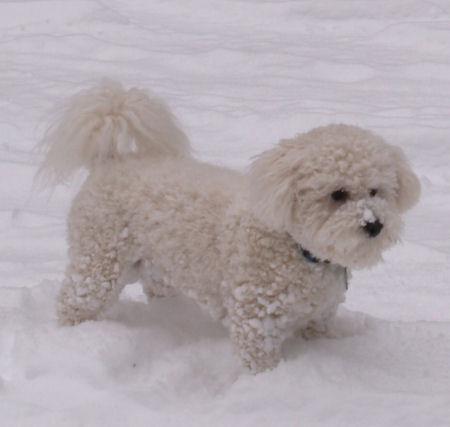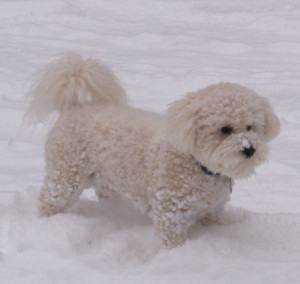January is “Keeping Your Pet Warm” Month. If you live in a region where the winters are cold, then you probably have a yearly routine to prepare yourself for the season change. You might change out your wardrobe, get your car ready for winter, and insulate your home. Don’t forget to take precautions to keep your dog warm and healthy. There are plenty of winter hazards out there, such as antifreeze and ice. Take steps to keep your dog safe! Here are some cold weather tips to you and your dog this winter:
Do not leave your dog outside unsupervised without a heated shelter. Just because your dog has fur, it does not mean he can withstand the cold. Though some dog breeds (like Huskies and Malamutes) are better suited to cold weather, all dogs should have access to a warm shelter at all times. Most dogs do best living indoors. However, if your dog must live outdoors, provide a heated dog bed and adequate shelter.
Small dogs or those with little to no hair should have sweaters or jackets for protection against the cold. Some of the most common breeds that will benefit from protective clothing are Chihuahuas, Miniature Pinschers, Whippets, and Greyhounds. Remember, not all dogs will tolerate clothing, so don’t push it – just make an extra effort to keep them out of the cold. Keep food and water in a place where they will not freeze – preferably inside! A heated dog bowl can help outdoor water and food from freezing.
Watch those feet! If your dog will tolerate it, consider foot protection booties. This can keep your dog’s feet safe from harm, such as dangerous objects hidden by the snow or salt on roads and walk ways. Additionally, booties can help give your dog a better grip and prevent slipping on ice.
When walking your dog near ice, use extra caution to avoid slipping. Always keep a close watch your dog and be sure he says nearby. Do not allow your dog to run across frozen bodies of water – he could fall into icy water if the ice is too thin!
If you use an indoor or outdoor fireplace, always keep a safety guard around it in order to protect your dog away from the flames and soot. Do not leave a fire unattended.
If your dog is in the cold and begins excessively shaking or shivering, get him back to warm shelter as soon as possible. If you suspect your dog is developing hypothermia, bring him to a vet immediately.
Avoid letting your dog eat snow or anything else on the ground. Dangerous objects or chemicals may be hidden in the snow. Also, eating snow this can cause stomach upset and even hypothermia. Always keep fresh room temperature water available at all times.
Beware antifreeze – It is highly toxic! Antifreeze tastes good to pets, but even a small amount can kill your dog. Though exposure to antifreeze is a risk all year, the risk is especially high during the colder months. Keep your eyes on your dog at all times – and keep antifreeze out of reach. If you suspect your dog has had ANY exposure to antifreeze, get to a vet right away.
In general, be sure to contact your vet if any abnormal behavior or signs of illness appear. Also, have a look at the cold weather checklist from the Veterinary Medicine guide.
Did you know that your dog’s normal temperature is a few degrees higher than yours? Winter is the perfect time of year to snuggle up – so have fun and stay warm!
Cold Weather Safety for Your Dog
Be Safe and Warm for Winter
By Jenna Stregowski, RVT

